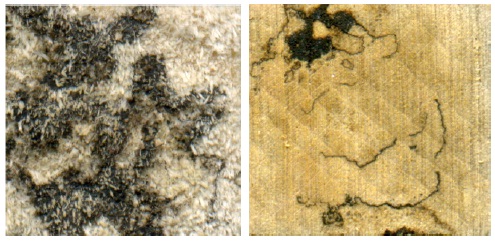More Interesting Facts About Xylaria Fungi
Violin manufactures have started to use Xylaria for increasing the acoustic properties of the violin wood. To do this, Xylaria longipes and Physisporinus vitreus are inoculated in the wood for a short period of time, decreasing the density and thinning the cell walls of the wood. The fungi are both killed using ethylene oxide, leaving the improved wood behind. Craftsmen then use the wood to make violins which have equal, if not better, sound quality than the infamous Stradivarius violins6!
Another fascinating area of research with a particular Xylaria species (called YX-28 in this study) is the study the antimicrobial activity of secondary metabolites made by this endophytic Xylaria species. An effective antimicrobial compound isolated from the secretions of YX-28 showed equivalent antimicrobial activities of ampicillin against microorganisms such as S. aureua, E. coli, and Salmonella typhia. This study suggests that the compound may be used as a natural food preservative, protecting people from the harmful microorganisms that can grow in unpreserved food8.
Xylaria polymorpha causes zone lines on wood (thin lines that create a boundary around a fungal colony on a piece of wood). Zone lines of X. polymorpha are probably made in response to separate genetically distinct colonies of X. polymorpha. As long as the fungal colonies remain only on the surface of the wood, zone lines actually can be preferable in lumber for aesthetic reasons. The color left behind on the wood from zone lines is referred to as spalting. X. polymorpha is widely used for spalting lumber because of its dark zone lines observed on inoculated lumber13. Who knew fungal colonized wood was so popular?

The full species name of dead man's fingers is Xylaria polymorpha (Pers.) Grev. 1824. The two abreviations, Pers. and Grev., reference the two individuals who are credited for classifying X. polymorpha17. Christian Hendrik Persoon first classified X. polymorpha in 1797 as the species Sphaeria polymorpha2,17. Later, in 1824, Robert Kaye Greville reclassified the fungus into the new genus name Xylaria1,4.

Who new there was so much to learn about dead man's fingers. Continue on to learn about me, the author, and why I wrote this website about Xylaria polymorpha. Or check out my references for further reading of your own.
